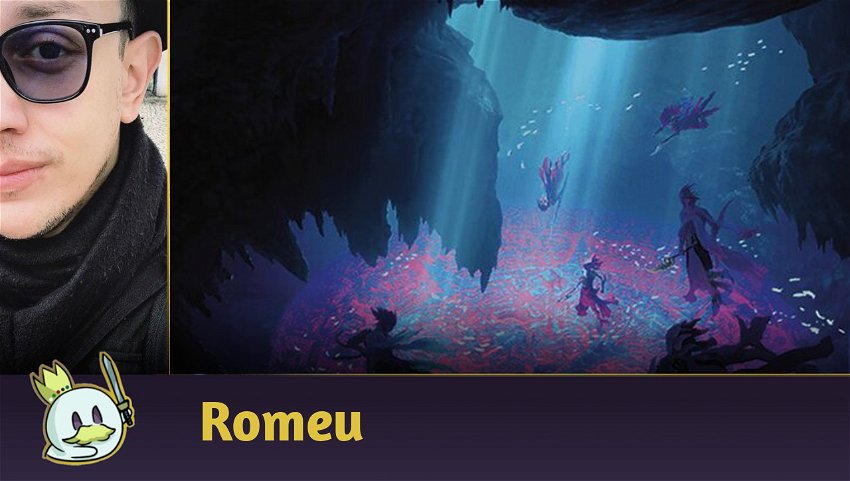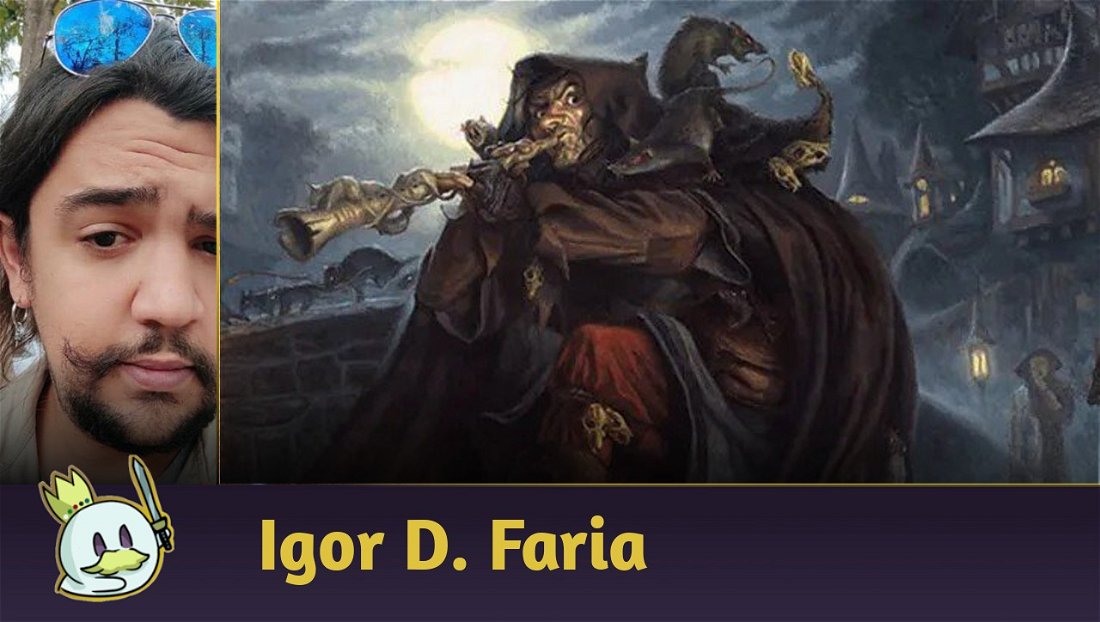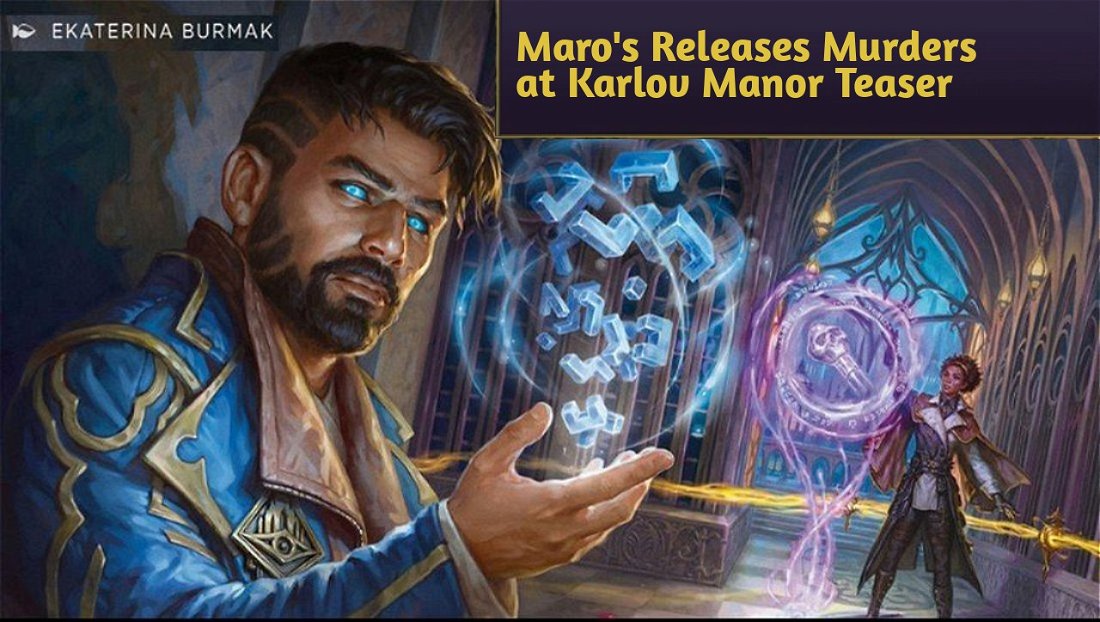The Standard Regional Championship Qualifiers (or RCQs) season is upon us!
As the first circuit of competitive in-person qualifiers in this format since the pandemic, the RCQs can bring new life to Standard and put it back in the spotlight of local stores and smaller communities that, today, rely on Magic Arena as the main way to play this modality.
However, to participate in these events and prepare for Standard's return, we need to understand how the format developed and where it stands in the current scenario. In this article, we present the most played decks in Standard, with a general analysis of how they operate and what their pros and cons are in the current Metagame!
The Standard Metagame in 2024
The first step to preparing to compete in a format, train and test new ideas is to understand the position its Metagame is in, as it is essential to understand the nuances that affect it and what predominates to understand the viability of the deck or strategy that you have in mind.
As has been the case for many years, Standard is defined today primarily by attrition archetypes, known as Midranges.

In general, these Midranges are strategies that seek to accumulate value through various two-for-one effects, such as The Wandering Emperor or with sufficiently powerful cards that win the game on their own, such as Sheoldred, the Apocalypse.

As they rely on an increasing mana curve to take over the game, most of these decks rely on removals to deal with aggressive strategies and also resolve problematic threats on the other side of the board.
The existence of so many Midranges (Esper, Rakdos, Golgari, Dimir, Azorius, etc.) is Standard's current epicenter and defines the way the Metagame behaves and plays around them. In this regard, one strategy does remarkably well, the Big Mana or Ramp.

Big Mana is defined today by decks that can cast six or seven mana bombs without much difficulty and, through them, establish a card advantage large enough to bury Midranges in their own game.
Today, in this spectrum, we have Domain Ramp, which stands out as the current best deck in the format, Rakdos Discover as a Midrange proposal that can play on top of the others and Breach the Multiverse decks, which flirt to the Control or Ramp side, depending on the version.
If the format has go big strategies to play over the Midranges, it is natural for lists to emerge aimed at playing under the Ramps, creating the third point in Standard's rock-paper-scissors in 2024, the Aggro and Tempo decks.

Aggro in the current Standard are aimed at playing under Big Mana while trying to maintain a decent game against Midranges, for the most part, they rely on synergies between their spells to speed up the clock and dictate the pacing before the opponent can overwhelm them with value effects. Some, like Azorius Soldiers, are a little more efficient in playing attrition games, while others, like Mono Red Aggro, struggle a more to play evenly against card advantage bombs.
The last spectrum present in the format, but with a smaller influence than the others, are the Control decks.

While traditional versions with counterspells were previously viable, Cavern of Souls made archetypes like Esper Control much worse against Domain Ramp and other decks with greedy mana bases, which were the main opponents this version managed to prey on.
Today, most lists rely on a “Tapout Control” proposal, that is, instead of saving mana to counter spells and remove creatures, these strategies use their own turns to deal with the board and put threats into play. A good example of this are the Orzhov Breach decks and the newcomer Azorius Artifacts, which mixes synergy between artifacts with board control to create soft-locks on the battlefield.
Now that we've introduced you to Standard's current rock-paper-scissors spectrum, we can move on to the format's main strategies in the Lost Caverns of Ixalan season!
Tier 1
Tier 1 decks are those at the top of the competitive Metagame today. They are also the most played and produce the best results in online competitive events.
Domain Ramp
Arising from the need to respond to a Metagame taken over by Midranges, Domain Ramp has become the current most played deck in Standard and, possibly, the best in the format. In summary, its strategy seems pretty straightforward: accelerate your mana, clear the opponent's battlefield, cast Atraxa, Grand Unifier, bury the opponent with the card advantage generated by the Phyrexian angel and win the match.
In practice, Domain Ramp is made up of several interactions that make it an extremely solid archetype.

The first point that makes this strategy viable is the interaction between the Streets of New Capenna's Triomes and the Domain cards released in Dominaria United, especially with Leyline Binding, making it the most efficient removal in Standard today.
If that wasn't enough, Wilds of Eldraine brought another multi-format staple which interacts well here: Up the Beanstalk is the perfect two-drop for the list, replenishes itself in its owner's hand, and even offers an additional draw for each bomb cast in Domain Ramp as early as the third turn with Leyline Binding, or the fourth turn with Sunfall.

The sequencing between Sunfall with Atraxa, Grand Unifier alongside Up the Beanstalk is another of Domain Ramp's qualities, and one of the reasons this deck is so difficult to counter. Once your board is cleared by a sweeper, it is very challenging to get back into the game before Atraxa comes into play and/or the opponent casts a Herd Migration and stabilizes their board.
With so much value in one place, Domain Ramp is the ideal archetype for those who want to prey on the different Midranges present in Standard today, as their opponents will need competence and a good spell sequencing to guarantee victory.

Before Lost Caverns of Ixalan, Domain Ramp had two inherent weaknesses that managed to combine to have an advantage in this matchup: the mix between aggressive clock and counterspells was a bit too much to handle and made Azorius Soldiers, Mono Blue Tempo and similar decks efficient means of dealing with the opponent. Today, these counterspells aren't always an issue when Domain runs four copies of Cavern of Souls, forcing players to bet more on the “play under” strategy against it.
Rakdos Discover
With a sudden rise in the last two weeks, Rakdos Discover seeks to deal with a little of everything in the Metagame with self-sufficient pieces, but even more powerful when combined on the battlefield.

This deck is based on the Discovery mechanic introduced in Lost Caverns of Ixalan and attempts to extract maximum value from Geological Appraiser and Trumpeting Carnosaur by ensuring that any card found by them is, somehow, relevant to the game.

Therefore, its “low curve” has several quality permanents, in addition to running some of the best removals and discard spells available in the format today. Rakdos Discover also features the interaction between Trumpeting Carnosaur and The Cruelty of Gix, where we can discard the dinosaur at the beginning of the game as a removal and then reanimate it with the enchantment.

Rakdos Discover is a relatively new strategy, and while it has demonstrated good results and quickly advanced to the top of the format, he is also very adaptable in dealing with the rest of the format, but suffers if the opponent can establish an efficient board while presenting a disruptive game plan.
Esper Midrange
Considered by many to be the best deck in the format, Esper Midrange has seen a slight decline in the last two weeks. However, it still presents itself as the safest option for the competitive Metagame.

Esper Midrange is geared more towards quality low-cost creatures than other archetypes in the same category, and the main reason is the added power and hand filtering that Raffine, Scheming Seer offers alongside them and solidifies the deck as the best option in Standard last year. Today, Raffine is joined by Deep-Cavern Bat and Subterranean Schooner to establish wonderful synergies.

Another highlight is the abundance of great cards available in its colors, which allow for different variants, with some more oriented towards greater interaction with the opponent, while others seek to be more proactive with Wedding Announcement and Virtue of Loyalty.
Esper Midrange does well against other Midranges and creature-oriented decks like Azorius Soldiers. However, it has problems against Big Mana or strategies with very explosive plays, which punish it's occasionally slow manabase.
Tier 1.5
Tier 1.5 decks are those that don't belong to the absolute top of the Metagame, but can compete well in major events and achieve good results, with victories in Challenges and other championships.
Azorius Soldiers
Despite carrying the name “Soldiers”, Azorius Soldiers is much closer to a Tempo deck with value creatures rather than a typal strategy.

Of course, it still has the best part of the soldiers deck, where its interactions guarantee a fast and efficient clock, capable of winning the game in a few turns if the opponent doesn't interact well enough. However, what has propelled Soldiers to the top of the Metagame was its adaptability to new cards.

Knight-Errant of Eos was the great divider, which elevated its proposal beyond the synergies between one type. Instead, it started playing more impactful creatures and making the most out of the interaction between them and Zephyr Sentinel to make powerful Tempo and Card Advantage plays.

Its spell core ensures that once the pressure is set, we can just hold the match until our flying threats do their job, making this one of the most efficient but also most difficult strategies to masterfully pilot in Standard today.
Azorius Soldiers is excellent at dealing with greedier decks and some Aggros who attempt to play under, but it suffers significantly against any archetype with too many removals and sweepers.
Mono Red Aggro
“When in doubt, bet on speed!” is an excellent motto to define Mono Red Aggro in Standard.

Like its previous versions, Mono Red Aggro bets on a low mana curve, with creatures that have an immediate impact, to establish pressure against the opponent from the first turn and maintain a constant flow of damage and threats on the battlefield until finishing the game with lethal damage.


Bloodthirsty Adversary and Squee, Dubious Monarch double as aggressive drops that allow us to maintain the flow of threats even when the game goes on and/or our creatures are destroyed in the first turns.
In general, Mono Red Aggro is an excellent option for those who like fast games, and can get hold of any archetype that takes a long time to establish its game. However, as the format's fun police, it is a deck that everyone tends to prepare to face as early as in the first game with cheap removals and life gain, which compromises its position.
Golgari Midrange
Golgari Midrange is the classic version of what this macro-archetype proposes in Magic: The Gathering, with cheap removals, Planeswalkers, a dozen two-for-one effects, and a late-game bomb with Virtue of Persistence.

The biggest attraction of this variant compared to the others is the inclusion of Mosswood Dreadknight as one of the most difficult threats to kill in the current Standard and Glissa Sunslayer as one of the most efficient creatures in the format. Glissa also stands out for being one of the best enchantment removals available in this color combination today.

Another plus in this version is the interaction between Blossoming Tortoise with manlands and lands with activated abilities, capable of transforming them into powerful threats while reducing their activation cost.

Planeswalkers provide an edge in attrition games, making Golgari a little more resilient against other Midranges than other variants, but also making it more vulnerable against Big Mana, despite its great matchup against creature decks.
Tier 2
Decks in the Tier 2 category often appear in the Top 8 or Top 16 of Challenges and other events, but cannot always produce significant or massive results over many weeks. This category also includes strategies that are on the rise, but have not yet reached sufficient numbers to reach Tier 1.5.
Dimir Midrange
Dimir Midrange seeks to merge the quality of Esper's blue cards with a more solid manabase, creating a strategy that loses some flexibility in favor of a more objective and stable game plan to deal with both more explosive archetypes and Big Mana's most absurd plays.
Its biggest advantage lies in the mix between good lands and efficient openings that allow it to be a little more aggressive while protecting itself with counterspells, removals and discards, establishing a progression that culminates in Sheoldred, the Apocalypse while the other creatures can maintain pressure for a few turns.
Bant Toxic
Bant Toxic mixes a go-wide Aggro strategy with “combos” between Venerated Rotpriest and spells that target creatures to place poison counters on the opponent. This mix allows the player to establish an interactive strategy while managing to pull the last necessary counters through their spells and the proliferate mechanic.
Rakdos Ramp
Rakdos Ramp aims to run cheap interaction alongside mana accelerating methods such as Big Score and The Irencrag to sequence Chandra, Hope's Beacon with Etali, Primal Conqueror or Breach the Multiverse, creating a chain reaction which results in an unbeatable board position for the player. The deck also has Archfiend of the Dross as a cheap and hard to block threat, which follows up absurdly well with Burn Down the House to clear the opponent's board and deal huge chunks of damage in the process.
Azorius Artifacts
Azorius Artifacts operates as a synergistic Control, which runs several quality artifacts with relevant effects to hold the game and accumulate enough resources to bury the opponent in card advantage with Chimil, the Inner Sun, or establish an unbeatable board by turning Thousand Moons Smithy into a land which creates tokens whenever you cast an artifact.
Tier 3
Tier 3 decks are those that perform in Leagues and local store tournaments, appear in the Top 32 of Challenges, but are rarely among the winners. They can take hold of local Metagames and/or be more solid options as the format develops.
Orzhov Breach
Orzhov Breach is a Tapout Control which aims to bury the opponent in card advantage with its bombs, using the interaction between The Restoration of Eiganjo and Serra Paragon with other cards to hold the game until The Eternal Wanderer and Breach the Multiverse takes over the match.
Azorius Tokens
Azorius Tokens focuses on a go wide theme combined with quality creatures and permanents, such as Tishana’s Tidebinder and The Wandering Emperor. Its strategy revolves around populating the board to create interactions with Warden of the Inner Sky and Regal Bunnicorn, as well as benefiting from Virtue of Loyalty to create an unbeatable army on the battlefield.
Esper Mentor
Esper Mentor has grown in popularity lately and has solidified itself as a viable strategy in Standard, replacing the space that previously belonged to Mono Blue Tempo.
Its strategy consists of using a dozen low-cost spells to trigger Monastery Mentor and increase the power of Haughty Djinn, having cards like Recommission and Helping Hand to recur its winconditions.
Boros Convoke
Just like its Pioneer version, Boros Convoke relies on speed and multiple token generation with Gleeful Demolition and Voldaren Epicure to cast Knight-Errant of Eos as early as possible. From there, the aim is to maintain pressure and finish the game quickly with Imodane's Recruiter.
Conclusion
That's all for today.
Standard is in a very diversified moment if compared with some previous seasons, where we had an absolute best deck against the rest, or when the Metagame was only focused on a category of macro-archetypes.
While Midranges seem to dictate its pacing, none of them reach the point where the other strategies are invalidated, except for the traditional Control variant, which lost space because counterspells have become notoriously worse in the current environment, where Cavern of Souls guarantees protection for late-game bombs.
The RCQ season will certainly affect the competitive scene over the next few months, and it won't be a surprise if new proposals emerge at the top until the release of the next expansion, Murders at Karlov Manor.
Thanks for reading!













— Comments 0
, Reactions 1
Be the first to comment